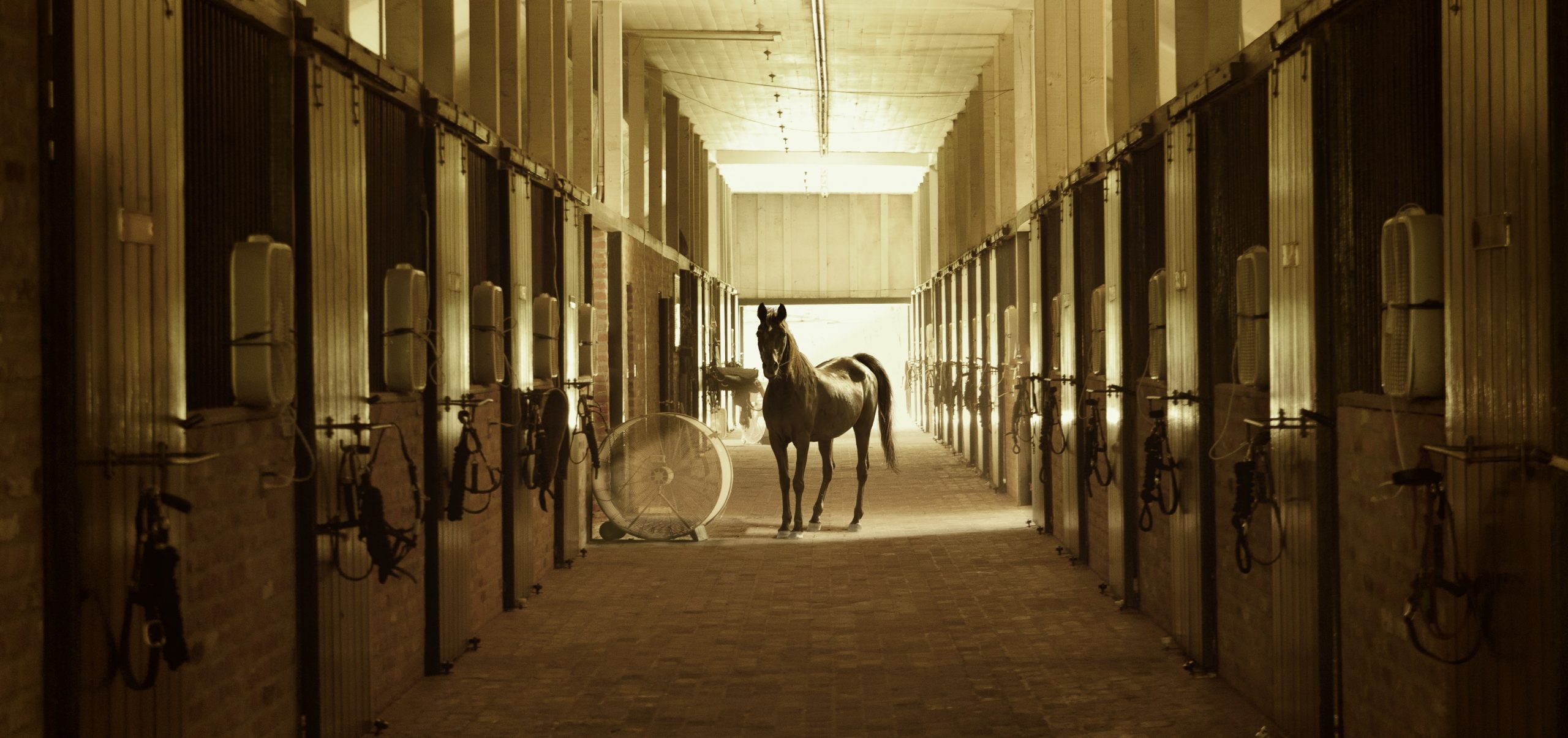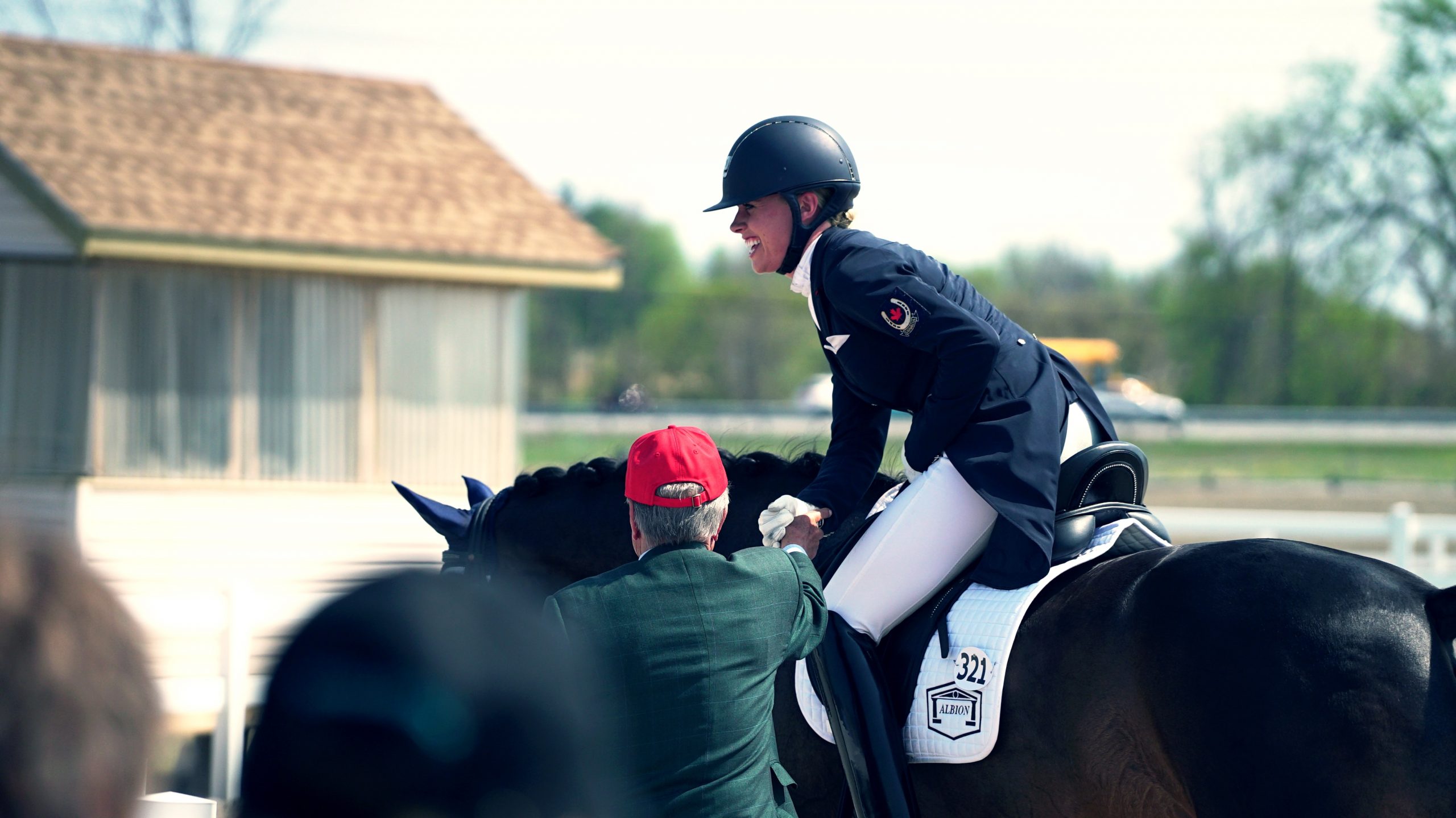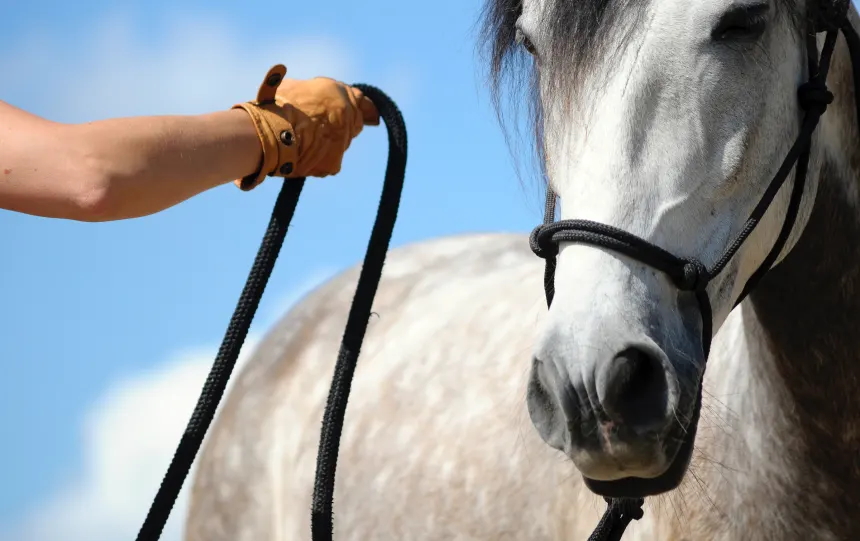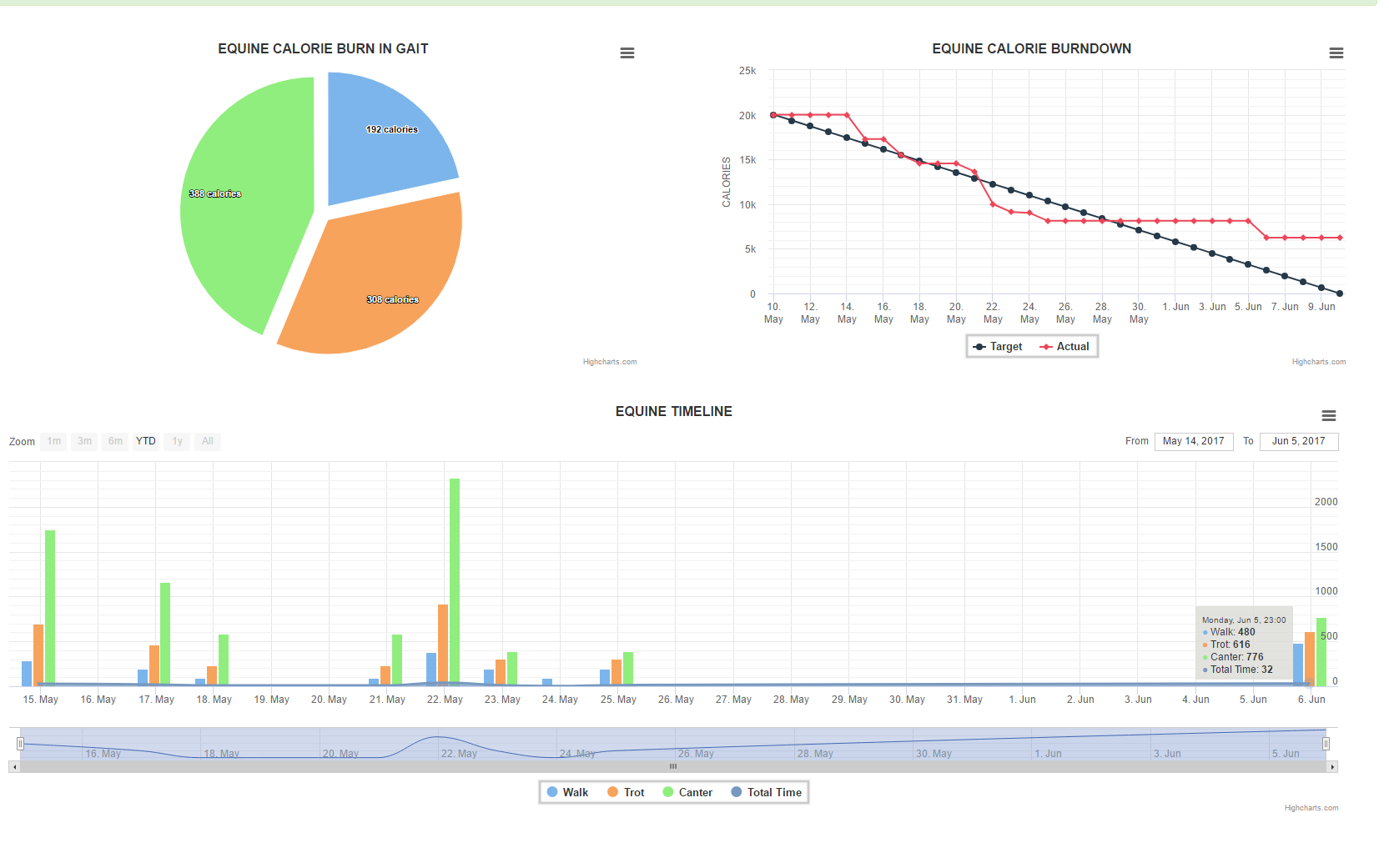Immediately after a horse injures his tendons or ligaments, stall rest is usually prescribed. But healing is promoted during the rehabilitation phase, which is by far the most significant component of his road to recovery.
Not only is the equine patient coming back after an injury, but he is also regaining the fitness he lost while idle. Too much work too early will cause re-injury and prevent the horse from making a complete comeback.
Leaving the Stall
Current thinking is changing about the length of stall rest a horse needs. Complete inactivity is not good in the long term. The sooner the horse begins controlled exercise, the better, as mild stress produces the optimum healing conditions for tendons and ligaments. It improves their elasticity and prevents scar tissue from forming at the site of injury.
The movement has the added benefit of staving off potential problems arising from stall rest, such as gut issues.
Spend more time with your horse during his recovery period. It will alleviate depression and boredom due to the sudden reduction in daily exercise, especially for a very fit equine. A happy horse heals faster.
Your vet will put together a tailored plan for your particular horse, but here is an outline of what you can expect.
Month One: Laying the Foundation
Hand-walking
The horse will spend the first part of his rehabilitation walking, preferably in hand. The horse may need light sedation for this phase after being cooped up for so long.
All his exercise must be on sound footing. His feet need to be balanced correctly to align the bones properly and keep him comfortable. This will require coordination between your vet and the farrier.
- Begin with 10 minutes of hand-walking a day.
- Gradually increase the time to 30 minutes, in increments of 2 minutes a day. His sessions can be split into two if desired.
- Walk in straight lines as much as possible and be careful not to make any tight turns.
After exercise, ice or cold hose the site of injury for 10 to 20 minutes to decrease inflammation. Using the spray function on the hose nozzle will massage the horse’s legs, increasing circulation and promoting healing.
Walking Under Saddle
Once the horse is up to 30 minutes walking in hand, he can be ridden at a walk, adding 5 minutes a week until he’s up to 40 minutes a day.
Again, walk on a suitable surface. A well-groomed arena provides consistency of terrain and cushions the legs, so don’t be tempted to go out on the trails, where the ground is uneven.
Here are some exercises to gain more value from your ride:
- Walk-halt-walk. This will balance your horse and retrain him to listen to your aids. Be careful to move gently from one to the other, as abrupt transitions will strain the site of injury.
- Medium walk – free walk – medium walk. Alternating the tempo will build up his back muscles and regain the strength he lost during his time off work.
- Towards the end of this phase, you can start walking over ground poles.
- If you have gentle, smooth slopes in your vicinity, begin gradual hill work.
You should introduce absolutely no lateral movements, e.g. leg-yield and shoulder-in. These are especially bad for suspensory injuries.
Make a habit of checking his legs after exercise throughout his rehabilitation. Feel for any heat or swelling or sensitivity to touch, and compare legs to more easily detect abnormalities. Look out for subtle signs of trouble, such as a shortening of his stride or any other indication of tenderness.
As before, apply an ice treatment after every session or cold hose his legs for 10 to 20 minutes.
Month Two: Increasing the Work Load
Trot
Check with your veterinarian that your horse is ready for this phase. (Ideally, they should be examining him every four to six weeks.)
Introduce this gait on your regular flat riding surface.
- Use your walk work as a warm-up and cool-down for every session
- Introduce rising trot in short sections of 1 minute a day, gradually building up to 10 minutes. A suggestion is to add 15 – 30 seconds each way per day.
- Spend equal time trotting in both directions and do not lunge or ride in small circles or tight turns.
- If the horse is progressing well at the end of the month, you can add poles and rails and slight inclines.
If at any point his gait feels irregular, stop immediately and consult your vet.
As always, ice or cold hose your horse’s legs after work.
Month Three: Upping the Ante
Canter
Once the vet has cleared your horse, you can start cantering.
- Warm him up in walk and trot.
- Introduce canter gradually, beginning with his easier lead. As a guideline, start with 15 seconds in both directions, adding 15-second increments every other day on each lead.
- Don’t canter in circles for two weeks at least.
- Then add 20-meter circles, beginning with one in each direction and slowly adding more.
Check his legs afterwards for any signs of inflammation or discomfort, and continue to ice or cold hose them.
Month Four: Your Well-Earned Reward
Jumping
If your vet feels your horse is ready to jump, start by approaching a grid of small fences in trot. Ensure the distance between them is appropriately adjusted for the length of your horse’s stride. This will put less stress on the site of injury.
After a couple of weeks, it’s time to add a single obstacle.
Dressage
The last addition to your horse’s program will be lateral and extended work, as this type of training puts more pressure on his legs than any other. When you do reintroduce it, he should ideally be fitter than he was before his injury.
Rehabilitating a horse with significant soft-tissue damage takes time and patience. Follow your vet’s protocol, and your equine partner has every chance of making a successful recovery.
Resources:
https://thehorse.com/19778/tips-for-returning-horses-to-work-after-soft-tissue-injury/
https://practicalhorsemanmag.com/health-archive/hunter-jumper-injured-list-52854
https://equusmagazine.com/horse-care/safe-successful-comebacks-8133
https://dressagetoday.com/horse-health-/returning-to-the-dressage-ring-after-injury
https://dressagetoday.com/rider-wellness/experts-26909
https://horsejunkiesunited.com/2016/06/10/rehabbing-your-horse-after-injury-the-long-walk/
https://www.doctorramey.com/rehabilitating-tendon-and-ligament-injuries/
http://www.equinepartnersamerica.com/research/Gillis-RehabTendonsLigamentsAAEP.pdf – Includes protocols for returning to work, including jumping.







Leave A Comment